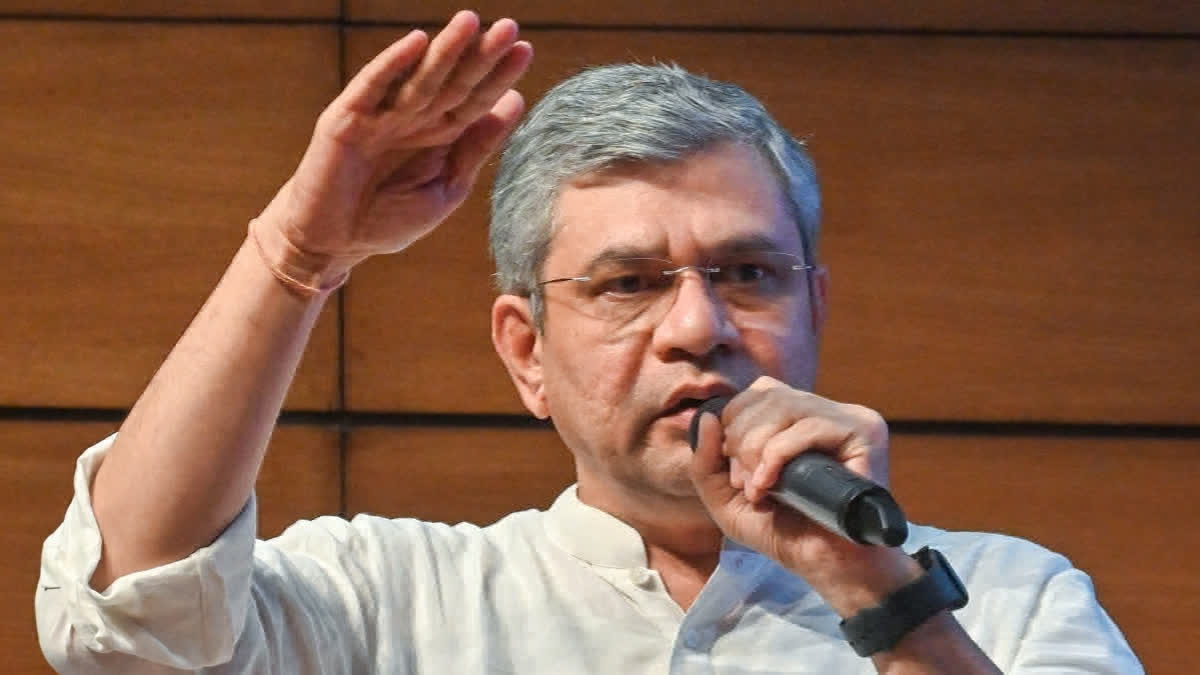New Delhi: Railways Minister Ashwini Vaishnaw on Monday outlined Indian Railways’ vision for electrification and adoption of alternative energy sources. The government’s goal is to achieve ‘Net Zero’ carbon emissions for Indian Railways, with 100 per cent electrification slated for completion in the 2025-26 financial year, he said.
Addressing investors and entrepreneurs at the Global Investors Summit 2025 in Bhopal via video conferencing, Vaishnaw emphasised the Centre's goal is to achieve ‘Net Zero’ carbon emissions for Indian Railways, with 100 per cent electrification slated for completion in the 2025-26 fiscal.
The next objective is to maximise renewable energy procurement, he added.
With this vision, Railways has already tied up 1,500 MW of renewable energy. Further strengthening this commitment, a significant 170 MW Power Purchase Agreement (PPA) was signed on Monday with the Madhya Pradesh government. This milestone marks the procurement of India's cheapest solar power at Rs 2.15/kWh and the Minister reaffirmed enthusiasm for exploring wind and nuclear energy procurement.
The Madhya Pradesh government, through Rewa Ultra Mega Solar Power Limited (RUMSL), is supplying solar power to Indian Railways from its largest solar park, the Ministry of Railways said in a statement. Vaishnaw commended Madhya Pradesh Chief Minister Mohan Yadav for his active role in advancing railway development in the state. He reiterated the Centre's strong commitment to a sustainable and green future for the country's transportation network.
The Minister also added that Indian Railways is committed to achieving net-zero emissions and shifting from road to rail transport to promote environmental sustainability, reduce oil imports, and lower overall logistics costs. As part of this vision, it is meeting its energy requirements through non-fossil sources like solar, wind, and nuclear power. The collaboration with RUMSL is a significant step in this direction, it said.
